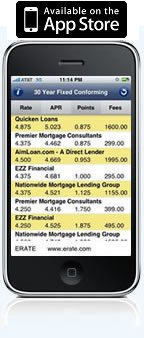Deposit Accounts: Understanding Checking Accounts
by Amy Lillard
(3/2/2013) The checking account is the most basic of financial instruments at consumers’ disposal. But while most people have one, they may not understand the full capabilities and options available to them.
Checking accounts serve as many people’s primary means of depositing, withdrawing, and holding money. An account serves as a holding place, from which you can pay others through checks or debit cards, and to which you can add your paychecks and other funds. While in the past checking accounts were primarily accessed through writing checks, today they are virtual institutions available through ATMs, debit cards, and online accounts.
Most checking accounts serve only as a repository, and unlike savings accounts and other deposit accounts, do not earn interest. Most are available with few or no fees as well. While you can move money into and out of the account at your discretion, banks will charge penalties for checks and other purchases without sufficient funds covering them.
These basic and “free” personal checking accounts are the norm. However, with the advent of online banks, along with banks desperately trying to make more money from their account holders, consumers have more checking account options than ever before.
• Interest-earning. Some checking accounts have taken cues from savings accounts and offer the ability to earn interest on the balance. Typically these accounts require a minimum balance. It’s important to realize that the interest earned from these accounts will always be less than savings accounts, so it’s advised for those who carry higher balances in their checking.
• Joint. Married couples, business and life partners, and other groups can open a joint account for multiple people to access.
• Second chance. For those who have had financial and banking difficulties in the past, including bouncing too many checks, these accounts offer important options. Typically these accounts will charge higher fees and institute other requirements to remain in good standing.
• Business checking. Just as individuals and groups use checking accounts to deposit money made and pay expenses, businesses use these accounts to do the same. Often these accounts will come with different rules and deals than personal accounts, along with added features designed for business owners.
• Special populations. Checking accounts may be offered at different levels and rules for lower-income individuals, students and senior citizens, among others. Each may offer special deals and offers relevant to these populations, such as prescription drug discounts for seniors.
• Money market checking. These accounts may provide interest at a higher yield than normal accounts and even other interest-earning checking accounts. In exchange, accounts holders will have requirements for minimum balance and limits on transactions per month.
In addition to these, consumers have the option of obtaining checking accounts from a local physical bank, gaining the ability to work with tellers and maintain personal contact. Express accounts offer this personal contact for a fee. And online-only accounts forgo a physical location entirely.
Related articles:
Deposit Accounts: Types of CDs
Deposit Accounts: Understanding Money Market Accounts
Deposit Accounts: Understanding Certificates of Deposit
Deposit Accounts: Types of Savings Accounts
When Shopping for a Savings Account, Don't Forget About Credit Unions
Combat the Weak Dollar With Smart Savings
Don't Let Low Rates Scare You Away fromSaving
Look Online to Kick Off Your Savings the Right Way
Save Money Using a Money Market Account
Americans Now Have More Options for Retirement Savings
Do Yourself a Huge Favor: Save 10%
Fannie Mae & Jumbo Mortgage Rates
Just One Click! = Current Rate Chart

Start by selecting your state

Amy Lillard
The ERATE® Resource Guide to No-Closing-Cost Refinancing
Principal Reduction: New Programs, More Controversy
Understanding Mortgages: Mortgage Paperwork
Understanding Mortgages: Types of Mortgages
Understanding Mortgages: How to Get a Mortgage
Understanding Mortgages: Buy or Rent?
Understanding Mortgages: Working with a Real Estate Agent
Understanding Mortgages: Working with a Real Estate Agent
Refinancing: Selecting a Loan

- Mortgage Program Options
- Interest Only Mortgage
- 100% Mortgage Financing - No Down Payment
- Mortgage Rates Comparison
- Search for Mortgage Rates
- No Costs Mortgage Refinancing
- 2% Rule - Refinancing Mortgage
- Yield Spread Premium
- Prepayment Penalty - Mortgage Refinancing
- What is APR and how is it calculated?
- Private Mortgage Insurance - Refinancing
Moving Ahead With Your Refinance
Get the Updated and Improved Mortgage Rates App from ERATE.com
FREE Mortgage Rate WidgetsYour State's Rates or National Rates Get this Widget for any State you want


